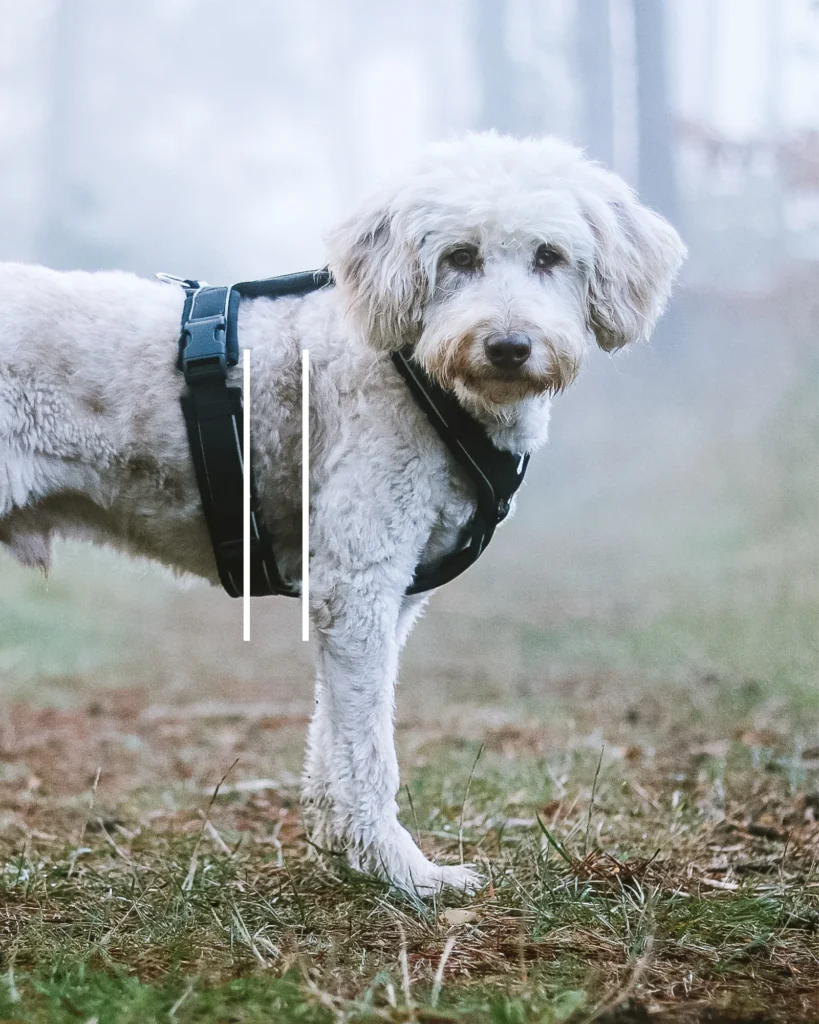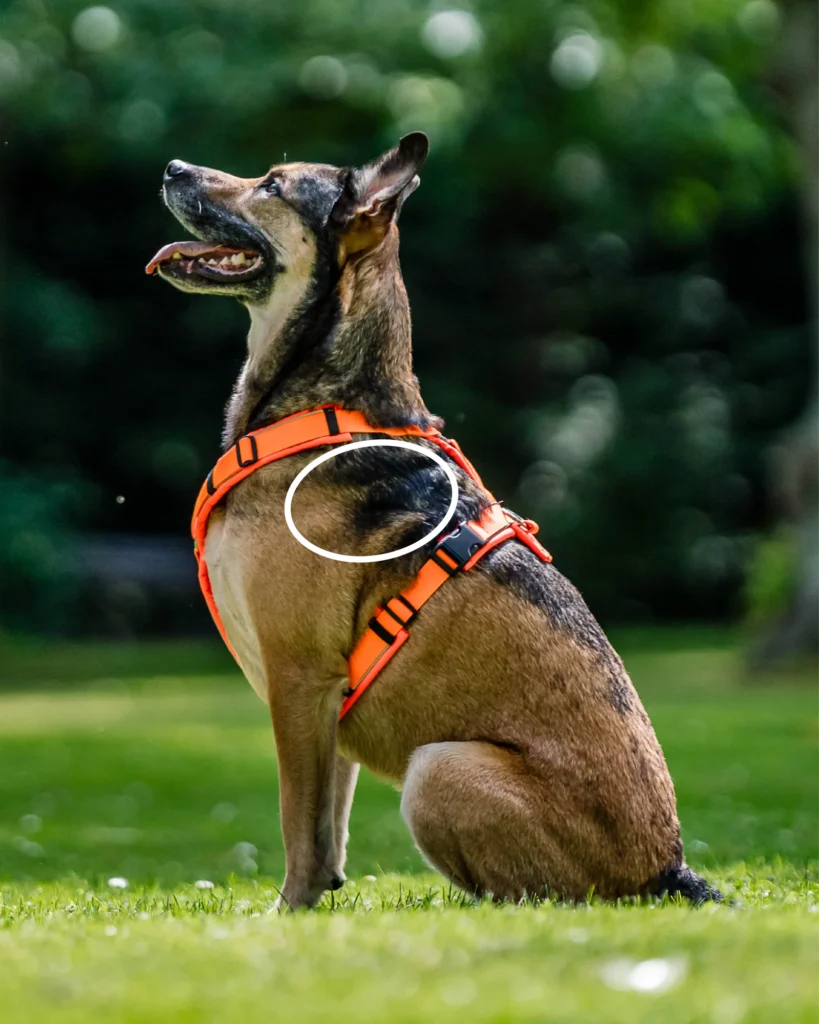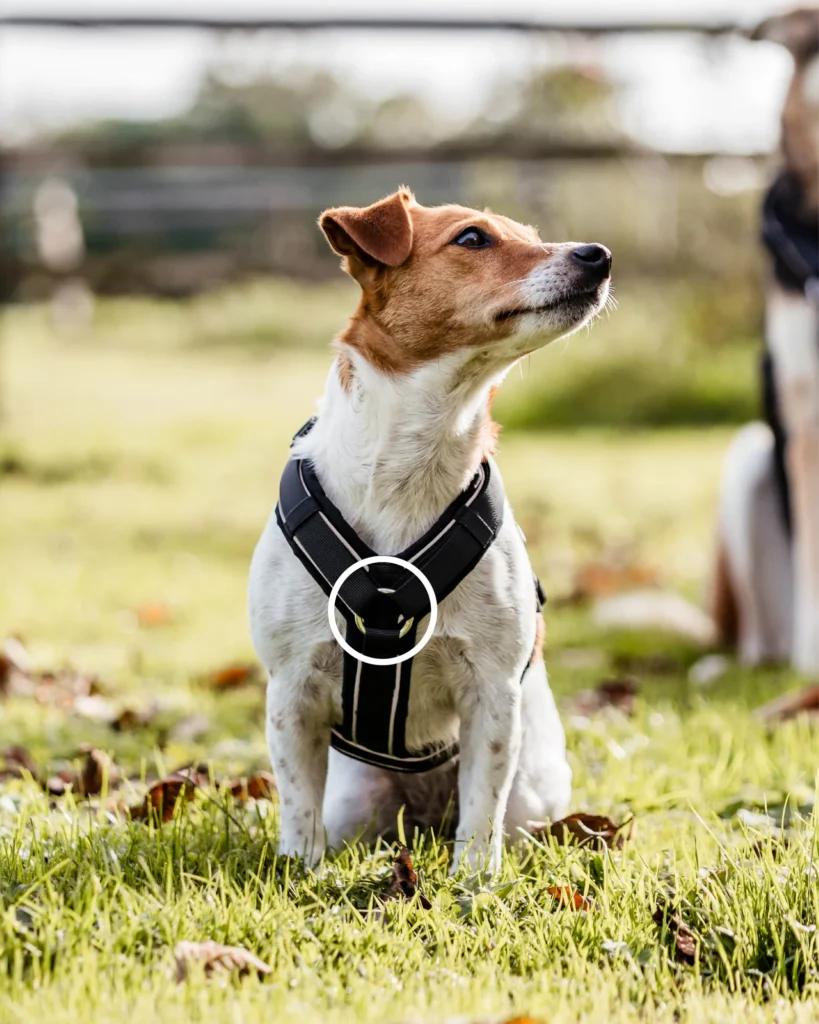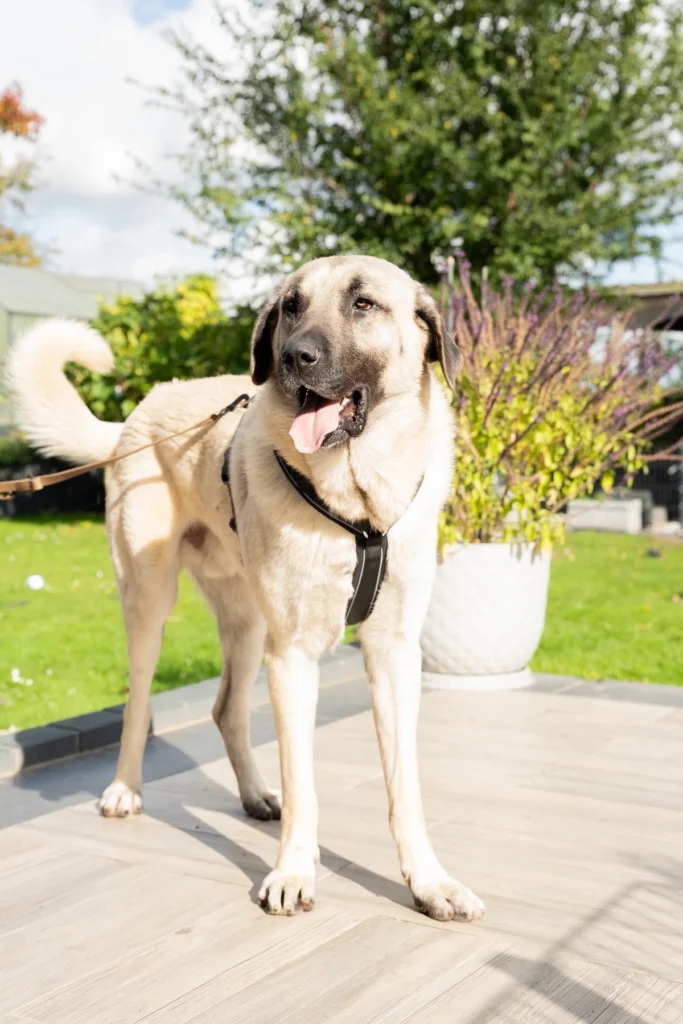Finding the right dog harness size can feel like a daunting task, especially with the many options available in terms of designs, materials, and measurements. But with a little attention to detail and patience, you’ll be able to find the perfect fit that ensures comfort and safety for your furry companion.
In this guide, we’ll walk you through everything you need to know about measuring for a dog harness, ensuring you make the right choice for your pet’s needs.
The Importance of a Well-Fitting Dog Harness
A properly fitted harness is essential for your dog’s comfort and safety. Whether you’re going for a walk, a run, or engaging in training activities, a harness that fits well will help distribute pressure evenly and prevent unnecessary strain or chafing.
When fitting a Y-harness, which is one of the most common types of dog harnesses, there are three key areas to focus on:

- Belly Strap Position: This strap should sit about a hand’s width behind your dog’s front legs. It’s crucial that the strap doesn’t restrict your dog’s movement, particularly their elbow joint. The belly strap should also stay in place, even when the harness is pulled.
- Chest Strap Fit: The chest strap should allow your dog’s shoulder blades to move freely. This is vital for maintaining their range of motion, especially when they’re walking or running.
- Chest Strap and Chest Bridge Alignment: The point where the chest strap and chest bridge meet should not be positioned too high on the dog’s neck. Ideally, this should be at the upper end of the sternum to distribute pressure evenly across the chest without constricting the throat.
A harness that’s too tight can restrict your dog’s movement or cause discomfort, while one that’s too loose can slip off or fail to distribute pressure properly. As a rule of thumb, you should be able to slide a flat hand under all the straps to ensure it’s not too tight.
How to Measure Your Dog for a Harness
Measuring your dog for a harness is the first step toward finding the perfect fit. To do this correctly, you’ll need to take a few specific measurements:

- Belly Circumference: Measure around your dog’s rib cage, about a hand’s width behind the front legs. Avoid measuring too close to the legs, as this could affect the harness’s fit. The measuring tape should remain at an equal distance from the front legs on both sides. If your dog is wiggly, it’s helpful to have a second person assist you in taking accurate measurements.
- Chest Bridge Length: This measurement is taken from the highest point of your dog’s sternum to where the belly strap lies, about a hand’s width behind the front legs. It’s important that this length isn’t too short or too long, as this will affect the positioning of the belly strap and its ability to sit comfortably.
- Back Bridge Length: This measures from the back of your dog’s neck to the point where the belly strap lies. The back bridge length should be shorter than your dog’s actual back length to ensure that the harness fits properly and doesn’t shift during walks or other activities.
- Neck/Sternum Measurement: Unlike a collar, a harness doesn’t rely on neck circumference to determine size. Instead, the sternum-neck measurement is used, which is taken from the highest point of the sternum to the point where the neck strap will rest on your dog’s neck. This measurement ensures that the harness doesn’t sit too tightly or cause discomfort.
How to Choose the Right Harness for Your Dog
Now that you know how to measure your dog correctly, you might be wondering how to choose the right size harness. Harnesses typically come in a range of sizes, from XXS for tiny dogs like Chihuahuas to XL for larger breeds like Great Danes or Mastiffs. It’s important to check the specific dimensions of the harness you’re considering, as these can vary by manufacturer.

Some general breed guidelines for harness sizes are:
- XXS: Ideal for very small breeds like Chihuahuas and Dachshunds.
- XS: Suitable for smaller breeds like Jack Russell Terriers or Miniature Schnauzers.
- S: A good fit for dogs like Beagles, Cocker Spaniels, and larger puppies.
- M: Fits medium-sized dogs like Labradors, Dalmatians, and Australian Shepherds.
- L: Suitable for large breeds like Golden Retrievers, German Shepherds, and Malinois.
- XL: Best for giant breeds like Kangals, Dogue de Bordeaux, or Leonbergers.

While these breed guidelines can help, it’s always best to measure your dog yourself to ensure a precise fit.
Additional Considerations for Choosing a Harness
Beyond size, there are a few other factors to consider when selecting a dog harness:
- Adjustability: Some harnesses offer adjustable straps, allowing you to customize the fit more easily. If your dog is still growing or has an unusual body shape, a harness with adjustable straps can be a great option.
- Material: Dog harnesses come in various materials, including nylon, leather, and Biothane®. Choose a material that suits your dog’s activity level and environmental conditions. For example, nylon is lightweight and easy to clean, while leather offers durability and a classic look.
- Purpose: Consider the activities you’ll be doing with your dog. If you’re training your dog or need extra control, a harness with a back handle or a more secure fit might be necessary. For everyday walks, a simple and comfortable harness should suffice.
Final Tips for Ensuring a Good Fit
Once you have selected and fitted your dog’s harness, keep an eye on how they move and behave while wearing it. If you notice signs of discomfort such as rubbing or difficulty walking, it might be time to reassess the fit or try a different harness. Regularly check the fit as your dog grows or changes shape, and always ensure that the harness is properly adjusted for comfort and safety.
In conclusion, finding the right dog harness requires patience and careful measurement, but the effort is well worth it. A harness that fits well will ensure that your dog can move freely and comfortably, making walks and activities enjoyable for both of you.


